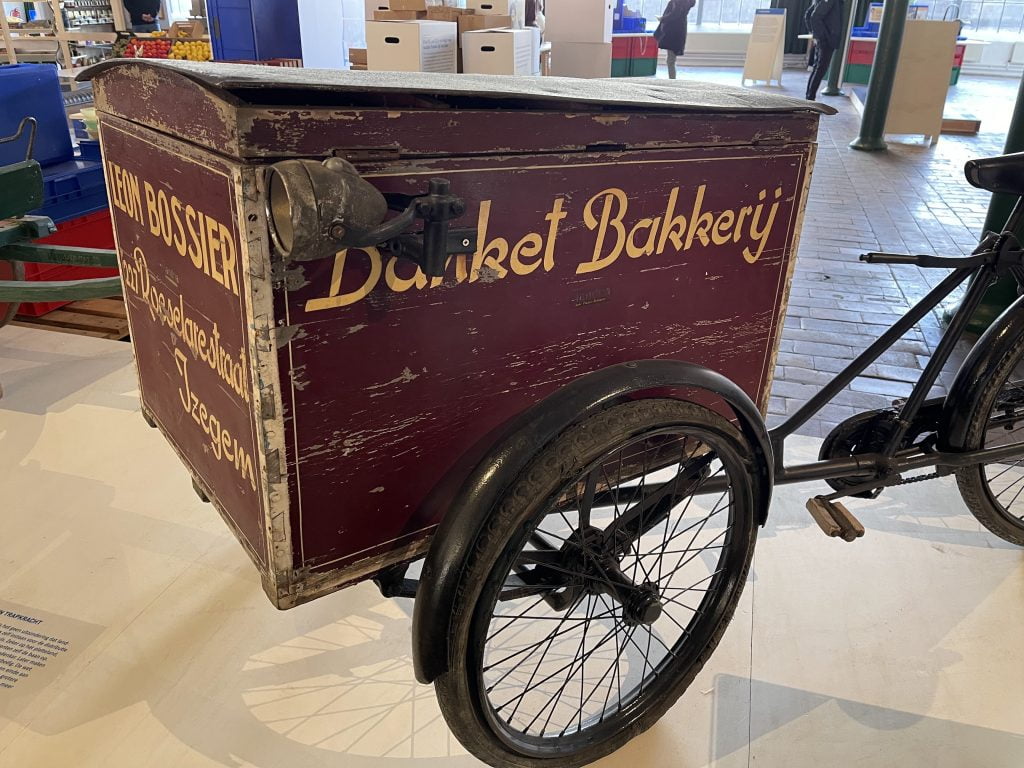Today we order everything on the internet with a simple mouse click.
In the center of Ghent, a stone's throw from the Vrijdagmarkt, the Industrial Museum is housed in an impressive factory building. In the former cotton factory – you can still smell the machine oil! – stories big and small bring the eventful industrial history back to life. Several generations of entrepreneurs, traders and workers take you on a universal story about people and machines and how they changed the world around us.
the daily meal
There is a lot to admire, but visitors will undoubtedly be immediately drawn to the vintage enamel billboards and 't Winkeltje in the middle of the exhibition. The shopping bag of an average household looked completely different a hundred years ago. Consuming consisted of eating the daily meal. Clothes had to last half a lifetime. Luxury products such as a television do not enter the western living room until 1950. Mass consumption is becoming the norm; fun shopping a favorite leisure activity.
transport and logistics
The path of merchandise from field or factory to consumer is largely invisible. Sea and inland shipping, aviation, road and rail transport: an endless flow of goods worldwide finds its way to the customer via a combination of means of transport and intermediate stops. Containers and cranes, pallets and forklifts take kilos of weight off the shoulders of factory workers, dock workers and warehouse workers. But today the working conditions and the ecological impact of the logistics sector remain food for discussion

Today we order everything on the internet with a simple mouse click. The physical store is losing ground as the pre-eminent place where we make our purchases. But the principle of home delivery is not new, just think of the milkman, itinerant walkers, mail order companies and teleshopping. The online offer is bursting at the seams today. At the same time, many people shudder at the sight of empty shops, underpaid couriers and vans racing past.
The sixties shop at the center of the exhibition will undoubtedly become a public favorite for nostalgia for the neighborhood store of yesteryear or for taking selfies for social media. A striking shopping cart was fished from the collection of supermarket chain Delhaize. It is a shopping cart from the first Belgian supermarket on Place Flagey in Brussels (1957). Thanks to Colruyt, an old school scanner attracts attention. Colruyt was the first supermarket in Belgium to switch to the barcode in 1987.




